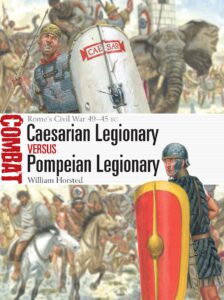
A Tragic Lesson
Joe Robinson, Francis Hendriks, Janet Robinson, The Last Great Cavalry Charge (Fonthill, 2025)
It is a truism that the age of cavalry dominance ended in World War I. Those who clung onto the traditions of massed cavalry charges overwhelming helpless defenders were in for a rude awakening when they discovered that horses and industrial warfare do not mix. We can determine the exact day that the Germans found this out thanks to a well-researched and informative book first published in 2015 and now republished by Fonthill books: The Last Great Cavalry Charge. That day was 12 August 1914 at the Battle of Halen.
It seems that the cavalry disaster at Halen was an accident waiting to happen. The authors trace doctrinal problems back to the war against France in 1870 when rifled infantry weapons took their toll on cavalrymen. But the Germans did not learn and reiterated the primacy of the cavalry charge in their 1909 doctrinal manual. This was despite structural, training, communications, and planning problems, all of which would play a part at Halen. The Germans erred at the strategic level too. Their wide swinging wheel on the right-flank of the Schlieffen Plan did not have enough cavalry, and the Belgians delayed their progress, with fatal consequences.
That brings our authors to Halen and its environs, which they describe in detail. They move on to the orders of battle and a description of the competing forces, including the unique Belgian cycling battalion. After some minor skirmishes between German and Belgian cavalry, the Belgians decided to dig-in and create a formidable defensive barrier. But miscommunication left gaps for the Germans to exploit; that and the weight of numbers soon began to tell on the backpedalling Belgians. The Germans took Halen then over-reached, launching eight cavalry charges against the Belgians, who were far from defeated. The authors describe this in gruesome detail with the aid of multiple first-hand accounts. They are as incredulous as the Belgians must have been at cavalry charges launched with ‘pride and tradition’ but no common sense. Confused fighting ensued until the Germans withdrew as darkness fell, having repulsed Belgian counter-attacks. The authors found that the number of human casualties was smaller than suggested at the time, but the great loss in horses badly affected the German cavalry. In their conclusion, the authors argue that this was the last great cavalry charge, noting the superiority of automatic weapons against horses and that the Germans never tried a mounted charge on this scale again.
This book is an informative account of a battle that should probably never have been fought. The authors lay bare the problems, most of them self-inflicted, that awaited the German cavalry in August 1914. Their depiction of the battle is well-researched, and the text is well-supported by first-hand accounts, particularly on the German side. The book reads like a report in places, but the combat sections are well told, as is the authors’ analysis of events. If you are one of those that hold to the myth of Teutonic efficiency, you will be in for a shock when reading this account. In many ways, the Battle of Halen typifies the culture of war shock that rapidly enveloped the armies on all sides when an outmoded form of warfare collided with the reality of the industrial age. Thus, The Last Great Cavalry Charge is well worth reading for military history students and those with an interest in World War I.

